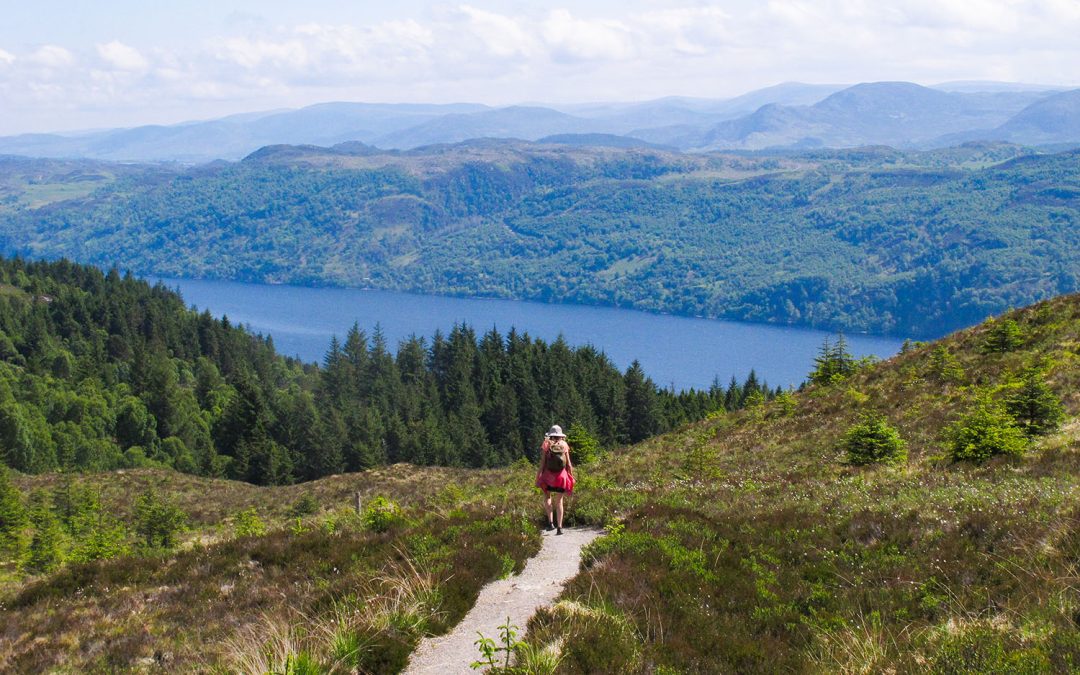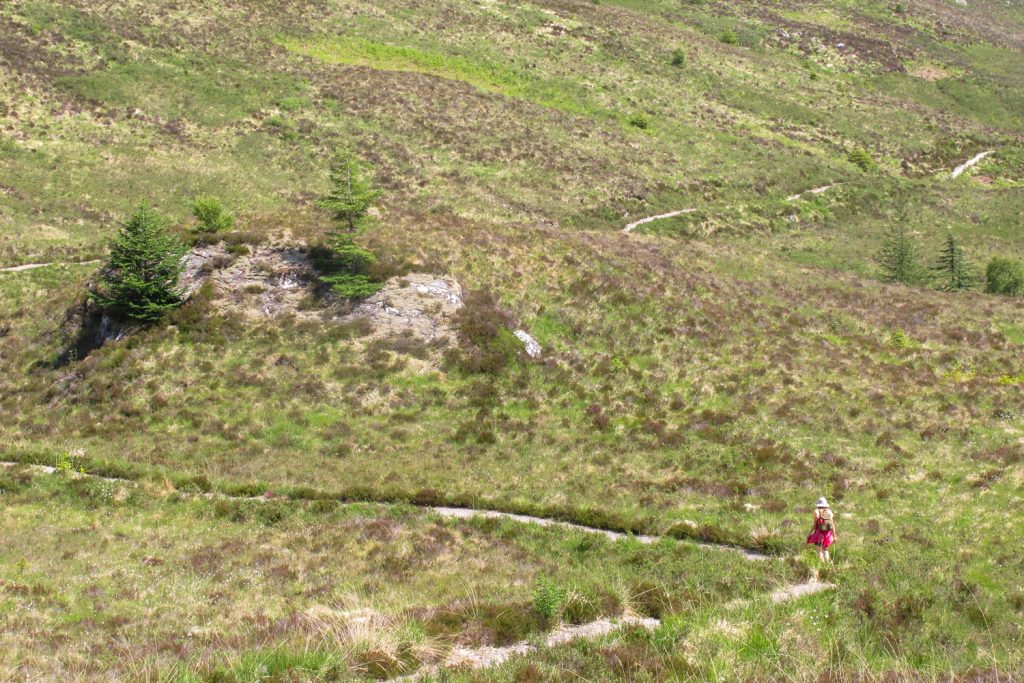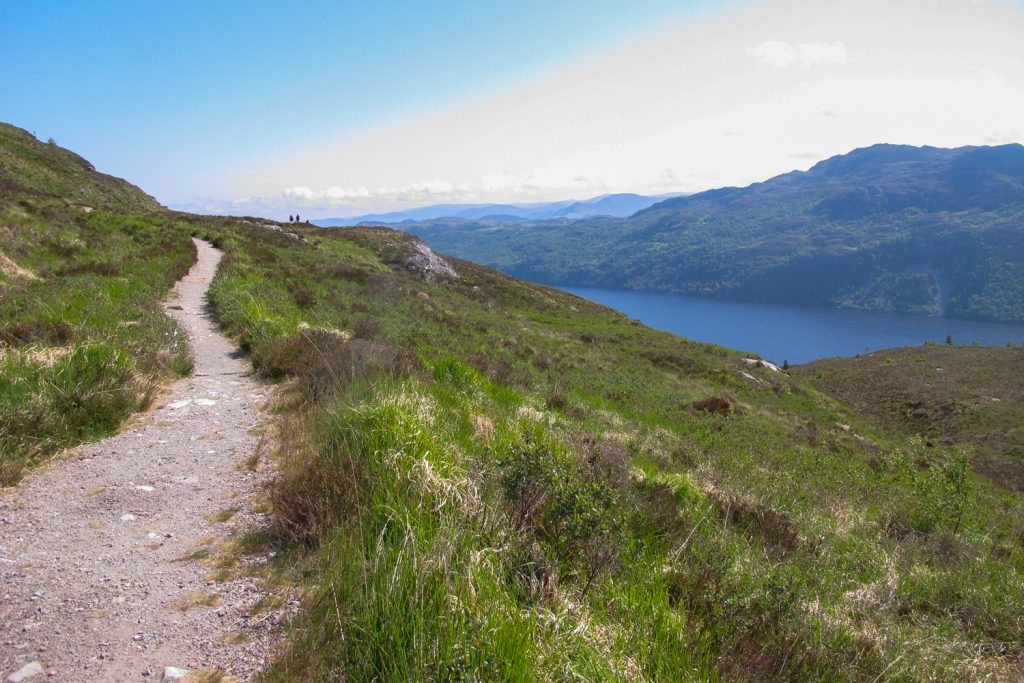
Coire Glas: Pumped Hydro Storage in the Scottish Highlands
Projects:
Coire Glas Pumped Hydro Storage, Great Glen, Scotland
Hiking, biking or walking miles and miles of transmission lines: I love being outside, working or just trekking in the woods. It’s led me to a career in photographing large infrastructure projects which are mostly outdoors, where I feel most at home.
And I’ve become a big fan of renewable energy projects, and the creative thinking that inspires them.
On a recent eight-day hike through the Scottish Highlands with my friend Rachel, we passed the site of the future, now-underway Coire Glas* Hydro Storage project, high above Loch Lochy.
(*The name means “little grey-green hollow”.)
Breezy, remote, barren of tall trees apart from intermittent Caledonian pine forest, the landscape perfectly suits — and is high enough — for this kind of project, which cleverly uses the potential energy of water pumped at times of low demand.

The bare landscape of the Scottish Highlands, above Loch Lochy, is the windswept setting for the Coire Glas project.
Pumped storage schemes involve two bodies of water at different heights. During periods of low demand and/or surplus generation, electricity pumps water from Loch Lochy in the Highlands to a reservoir at the top of the mountains, storing energy.
Water releases this energy in times of need, passing through turbines hidden deep in the mountains. This generates hydroelectricity at a time when demand is high or wind and solar power generation is low.
(Clean wind and solar power reduce carbon emissions, but this power is not always needed just when the wind blows or the sun shines.)
The system imitates a giant battery, storing energy until it’s needed, at the top of the Scottish Highlands.
A height difference of at least 500m between the upper reservoir and the lake below is essential if the economic energy recovery efficiency – the difference between energy required to pump the water uphill and the energy recovered when it runs downhill through the turbines – of 80% or more is to be achieved.
The hydro storage scheme promises to more than double Great Britain’s energy storage capacity.

The Great Glen Way stretches 79 miles from Fort William in the west to Inverness in the northeast. It’s a breathtakingly beautiful hike, and can be done over seven days, staying in guest houses along the way or simply camping at trailside campsites. ©Allman Environmental Services Photography
______________
Challenging terrain, geography and environments are a personal specialty. Capture the energy of your team at work, on training and field exercises, with heavy equipment or in challenging environmental conditions. These photos can be used again and again: in annual reports, your socials, on office walls and other marketing deliverables. -Suzanne
- CERTIFIED: SBA-certified WOSB, New York State- and City-certified WBE, and Port Authority certified DBE
- REGISTERED: SAM & ORCA. Experienced in Federal Government contracting and subcontracting.
- WILDLAND FIREFIGHTING CERTIFICATES S-130/190, L-180
- FAA PART 107 Since 2017
- DUNS: 839898728.
- FEIN: 84-2603642
- We accept all government agency purchase orders and credit cards.


Recent Comments